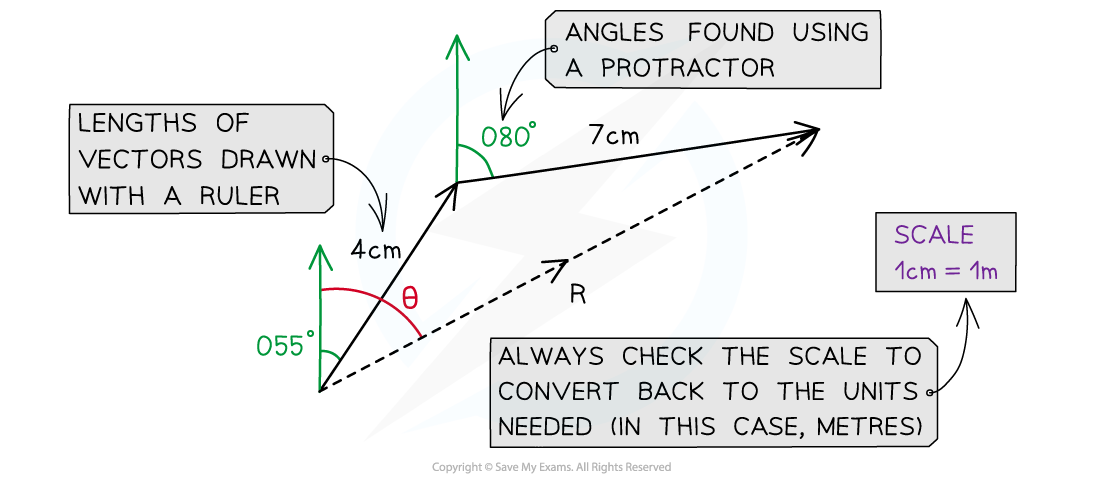Scale Drawings (Edexcel GCSE Physics): Revision Note
Exam code: 1PH0
Did this video help you?
Using Scale Drawings
Higher Tier Only
Resolving vectors into components allows for more accurate calculations of resultant forces
By resolving all of the involved forces into their horizontal and vertical components and then adding or subtracting as required, a final resultant force vector can be constructed using a scale diagram
Vector diagrams can also be used to illustrate net (or resultant) forces and equilibrium situations
Net Force
Vector diagrams include arrows in a particular direction which represent the different forces on an object
The size of the arrow corresponds to the size of the force
Net, or resultant, forces can be calculated by adding or subtracting all of the forces acting on the object
Forces working in opposite directions are subtracted from each other
Forces working in the same direction are added together
If the forces acting in opposite directions are equal in size, then there will be no resultant force – the forces are said to be balanced

Resultant forces on an object
Resolution of Forces
Two forces can be added together to find the resultant force
When two vectors are not at right angles, the resultant vector can be calculated using a scale drawing
Step 1: Link the vectors head-to-tail if they aren’t already
Step 2: Draw the resultant vector using the triangle or parallelogram method
Step 3: Measure the length of the resultant vector using a ruler
Step 4: Measure the angle of the resultant vector (from North if it is a bearing) using a protractor

A scale drawing of two vector additions. The magnitude of resultant vector R is found using a rule and its direction is found using a protractor
Note that with scale drawings, a scale may be given for the diagram such as 1 cm = 1 km since only limited lengths can be measured using a ruler
The final answer is always converted back to the units needed in the diagram
Eg. For a scale of 1 cm = 2 km, a resultant vector with a length of 5 cm measured on your ruler is actually 10 km in the scenario
Equilibrium
A system is in equilibrium when all the forces are balanced. This means:
There is no resultant force
An object in equilibrium will therefore remain at rest, or at a constant velocity, and not rotate or move

An object is in equilibrium if the horizontal forces on it are equal and vertical forces on it are also equal
Worked Example
The diagram below shows two rhinos pushing against a vehicle. The two forces are at right angles to each other.

Draw a scale vector diagram to determine the magnitude of the resultant force. Label the two forces applied and the resultant, and clearly state the scale used.
Answer:
Step 1: Decide on a suitable scale
A scale of 1 cm to 1.0 kN is the most suitable for this scenario
Step 2: Use grid paper to draw the vectors top to tail and to scale

Step 3: Draw the resultant vector and measure its length

Step 4: Use the scale to convert the length to kN
The resultant force is 8.6 cm, meaning the resultant force is equal to 8.6 kN
Examiner Tips and Tricks
When constructing scale drawings, always use a ruler and a sharp pencil and double check the scale (e.g. is 1 square = 1 cm)

You've read 0 of your 5 free revision notes this week
Unlock more, it's free!
Did this page help you?